Dear Customer,
we have caring tips for your plants. But those listed caring tips are general information when you placed the plants under optimum condition and that is hard to have in your room/house. so this caring tips is not perfect to all condition . So caring of plants are depending on where you place the plants. Most important things are two things LIGHT and WATER (IRRIGATION) fertilization are secondary element after those 2 things. Plants need light for them to have photosynthesis process and it convert light, oxygen and water into carbonhydrates(energy) and that is the power of growth. It get weaker if we don’t give them minimum light because plants cant grow.Beside if you are watering constantly under this low light condition, plants roots start to decay . This is like you are giving a lots of food to sick people. So,If we appy this points to your plants, here are the recommendations for begginner.
. Look for sunny corner in your room or find blight corner under artificial light for plants. If you want make sure? You better have light meter and check light intensity.
500 lux to 800 lux are minimum light needed by any plants. ( room with fluorescent light is just only 200 lux and that is dark for plant )
2. Observe pot media and water it when its surface have dried. You can omit irrigation if media are too wet.
Make interval of irrigation : WET - DRY -CYCLE
3. Avoid direct hit of aircondition air. The air is very drY and harm to plants.
4. Start fertilizer 3 months from purchased.
5.Spraying of pesticed/fungiside can be omitted, if you have not found any sign off pest/disease. Follow instrution of manufacturer.
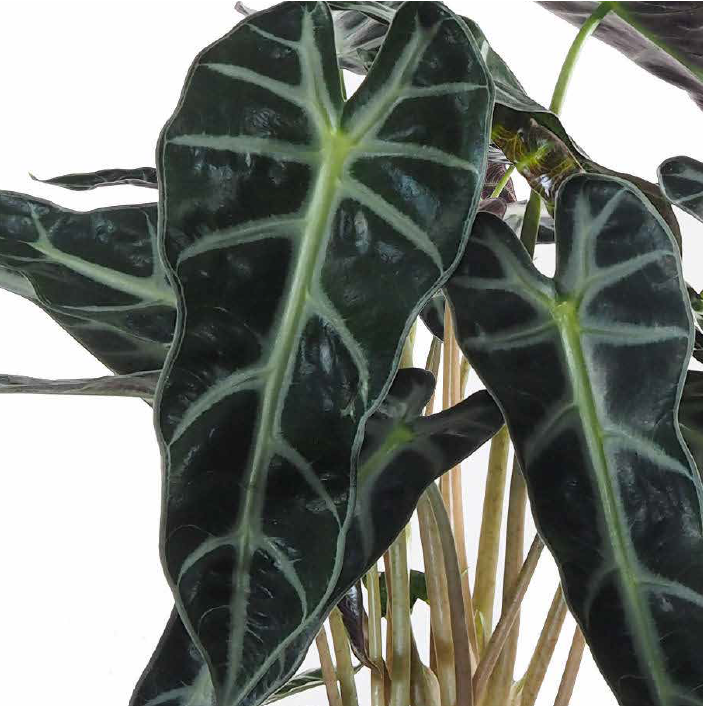
INDOOR PLANTS
Alocasia
Alocasia is a genus of broad-leaved, rhizomatous, or tuberous perennial foliage plants from the family Araceae. There are 97 accepted species native to tropical and subtropical Asia and Eastern Australia. Around the world, many growers widely cultivate a range of hybrids and cultivars.
Plant Care
 |
Requires partial light, but avoid bright sunlight. |
 |
Keep the compost moderately moist during growth, allowing it to dry slightly between each watering period. |
 |
Apply slow release fertilizer every 3 months from time you purchase. |
 |
N/A |
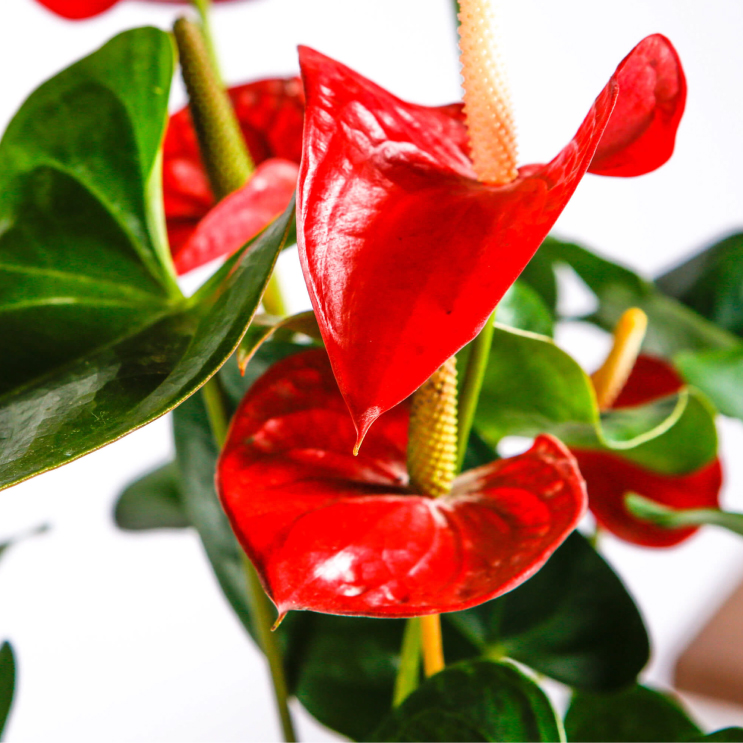
INDOOR PLANTS
Anthuriums
Anthurium is a genus of about 1,000 species of foliage plants, the largest genus of the arum family, Araceae. General common names include anthurium, tailflower, flamingo flower, and laceleaf. The genus is native to the Americas, where it is distributed from northern Mexico to northern Argentina and parts of the Caribbean.
Plant Care
 |
Requires partial light, but avoid bright sunlight. |
 |
Keep the compost moderately moist during growth, allowing it to dry slightly between each watering period. |
 |
Apply slow release fertilizer every 3 months from time you purchase. |
 |
N/A |
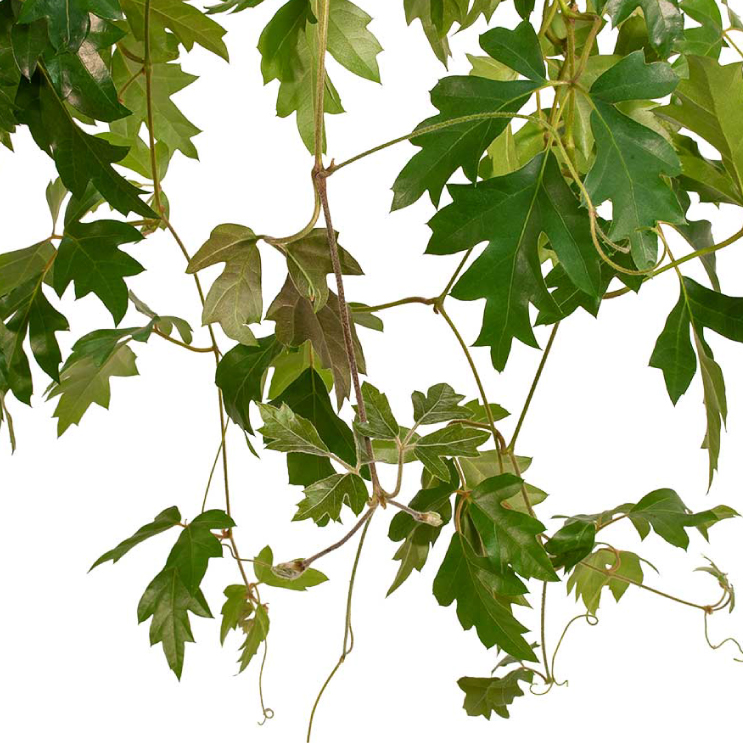
INDOOR PLANTS
Cissus
Cissus is a genus of approximately 350 species of lianas (woody vines) in the grape family (Vitaceae). They have a cosmopolitan distribution, though the majority are to be found in the tropics.
Plant Care

|
Requires partial light, but avoid bright sunlight. |

|
Keep the compost moderately moist during growth, allowing it to dry slightly between each watering period. |

|
Apply slow release fertilizer every 3 months from time you purchase. |

|
N/A |
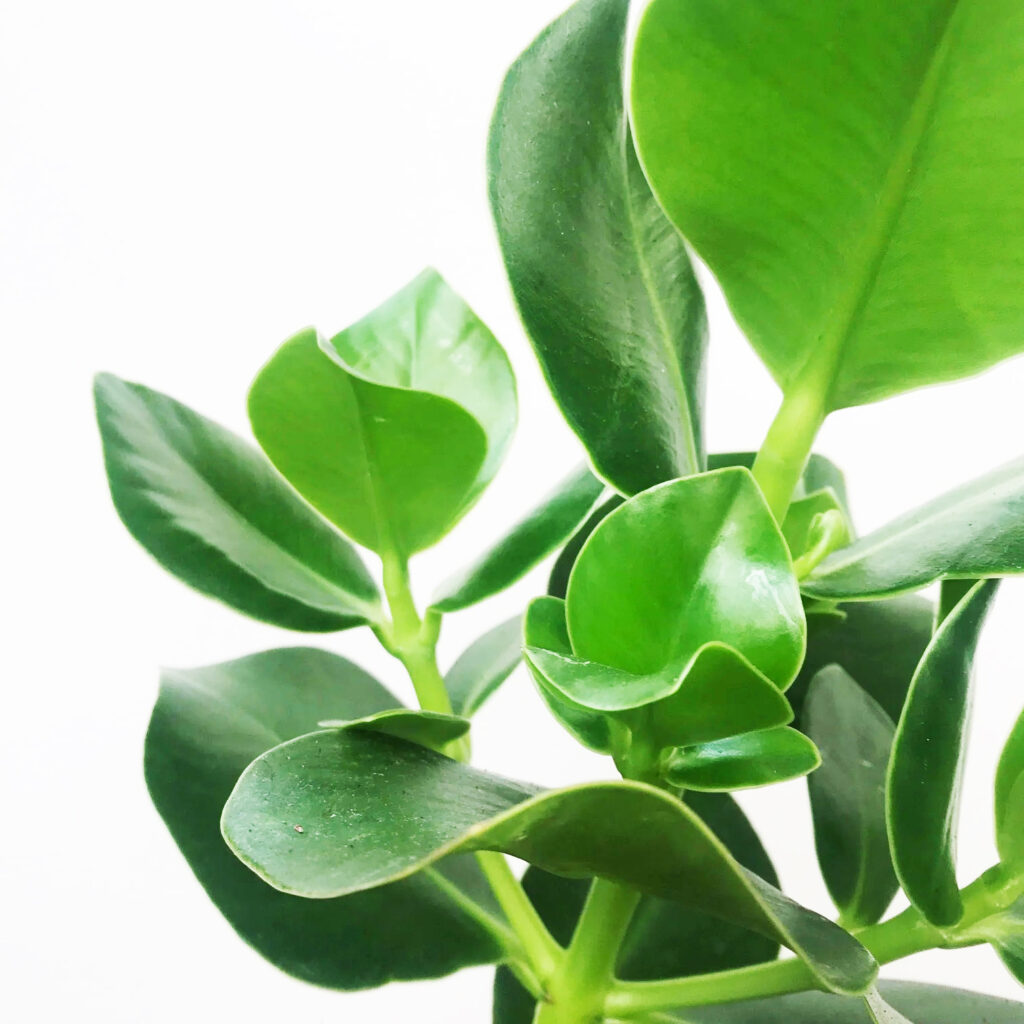
INDOOR PLANTS
Clusia
Clusia is the type genus of the foliage plants family Clusiaceae. Comprising 300-400 species, it is native to tropical America. The genus is named by Carl Linnaeus in honor of the botanist Charles de l’Écluse. The closest relatives of Clusia are the neotropical genera Chrysochlamys, Tovomita, Dystovomita and Tovomitopsis. Together with Clusia, these genera form the tribe Clusieae, where the fruit is a fleshy capsule with arillate seeds. The distribution ranges from the Florida Keys and southern Mexico to southernmost Brazil, and from near sea level to at least 3500 m altitude in the northern Andes. Species of Clusia are a characteristic component of a number of Neotropical vegetation types, and may even be dominant, as is often seen in montane forests of the Greater Antilles. Most species are found in lowland or montane rainforests, but some occur in drier habitats such as the restingas of Brazil, caribbean coastal scrub and dry interandean valleys. A number of species are confined to rocky habitats, such as tepuis or granitic inselbergs. A few grow as scattered shrubs in paramo. The apomictic Clusia rosea is an invasive alien in Hawaii and Sri Lanka, and possibly elsewhere.
Plant Care
 |
Requires partial light, but avoid bright sunlight. |
 |
Keep the compost moderately moist during growth, allowing it to dry slightly between each watering period. |
 |
Apply slow release fertilizer every 3 months from time you purchase. |
|
|
It can be used as garden plants. |
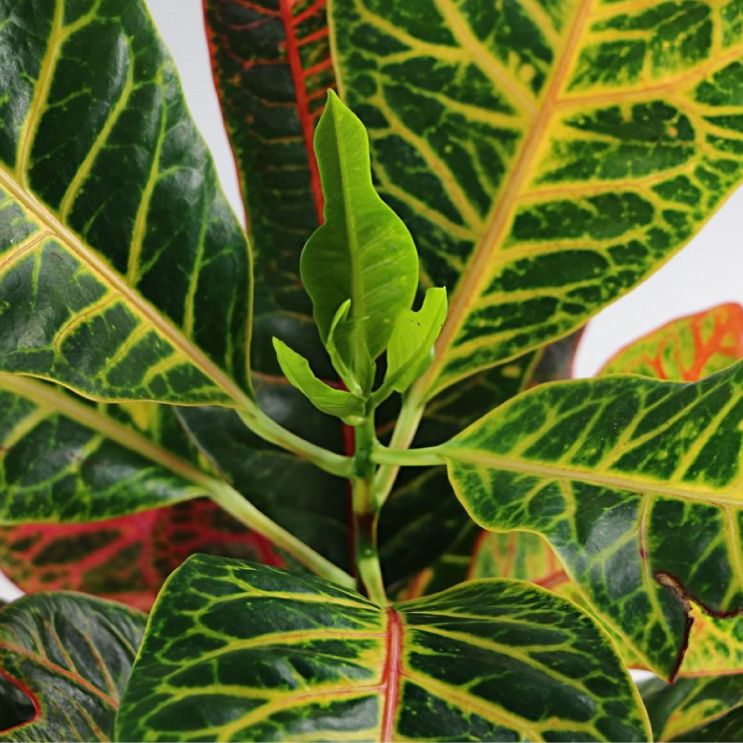
INDOOR PLANTS
Codiaeum
Codiaeum is a genus of plants under the family Euphorbiaceae first described as a genus in 1824. It is native to insular Southeast Asia, northern Australia and Papuasia. They are shrubs with leathery leaves and often confused with the genus Croton. Some species, especially Codiaeum variegatum, are cultivated as houseplants.
Plant Care
 |
Requires partial light, but avoid bright sunlight. |
 |
Keep the compost moderately moist during growth, allowing it to dry slightly between each watering period. |
 |
Apply slow release fertilizer every 3 months from time you purchase. |
 |
It can be used as garden plants. Sun lover. |
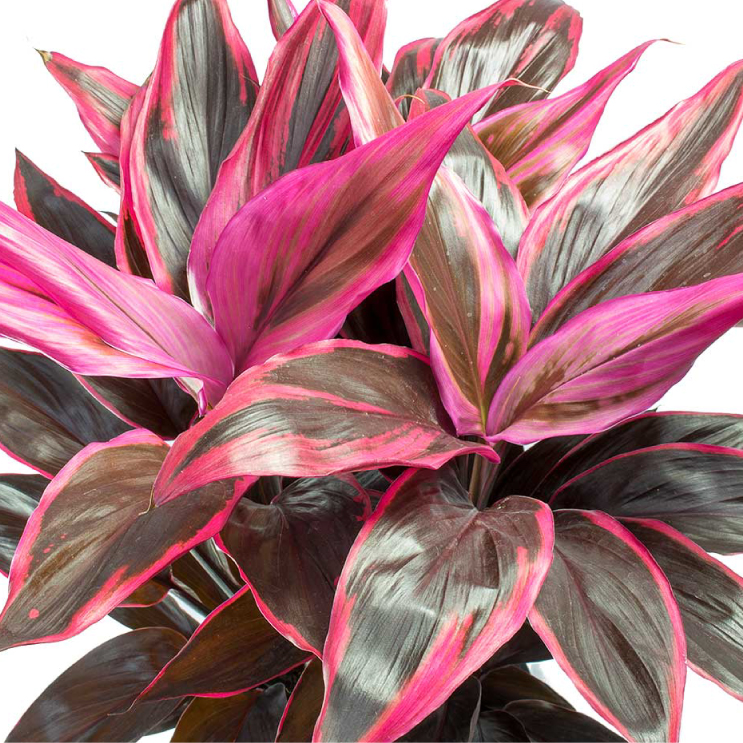
INDOOR PLANTS
Cordyline
Cordyline is a genus of about 15 species of woody monocotyledonous foliage plants in family Asparagaceae, subfamily Lomandroideae. The subfamily has previously been treated as a separate family Laxmanniaceae, or Lomandraceae. Other authors have placed the genus in the Agavaceae (now Agavoideae). Cordyline is native to the western Pacific Ocean region, from New Zealand, eastern Australia, southeastern Asia and Polynesia, with one species found in southeastern South America. The name Cordyline comes from the Greek word kordyle, meaning "club," a reference to the enlarged underground stems or rhizomes.
Plant Care
 |
Requires partial light, but avoid bright sunlight. |
 |
Keep the compost moderately moist during growth, allowing it to dry slightly between each watering period. |
 |
Apply slow release fertilizer every 3 months from time you purchase. |
 |
It can be used as garden plants. |
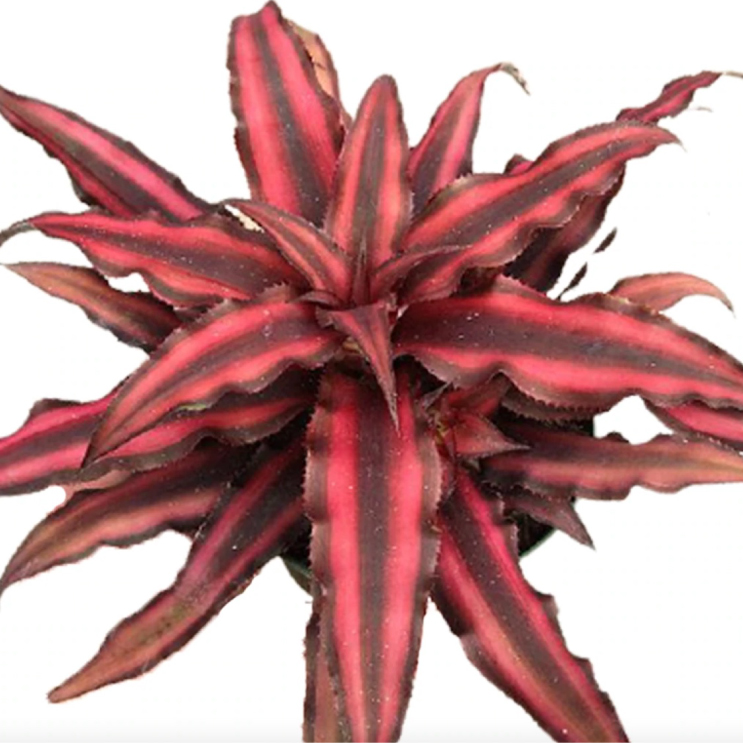
INDOOR PLANTS
Cryptanthus
Cryptanthus is a genus of foliage plants in the family Bromeliaceae, subfamily Bromelioideae. The genus name is from the Greek cryptos (hidden) and anthos (flower). This genus has two recognized subgenera: the type subgenus and Hoplocryptanthus Mez. All species of this genus are endemic to Brazil. The common name for any Cryptanthus is "Earth star".
Plant Care
 |
Requires partial light, but avoid bright sunlight. |
 |
Keep the compost moderately moist during growth, allowing it to dry slightly between each watering period. |
 |
Apply slow release fertilizer every 3 months from time you purchase. |
 |
N/A |
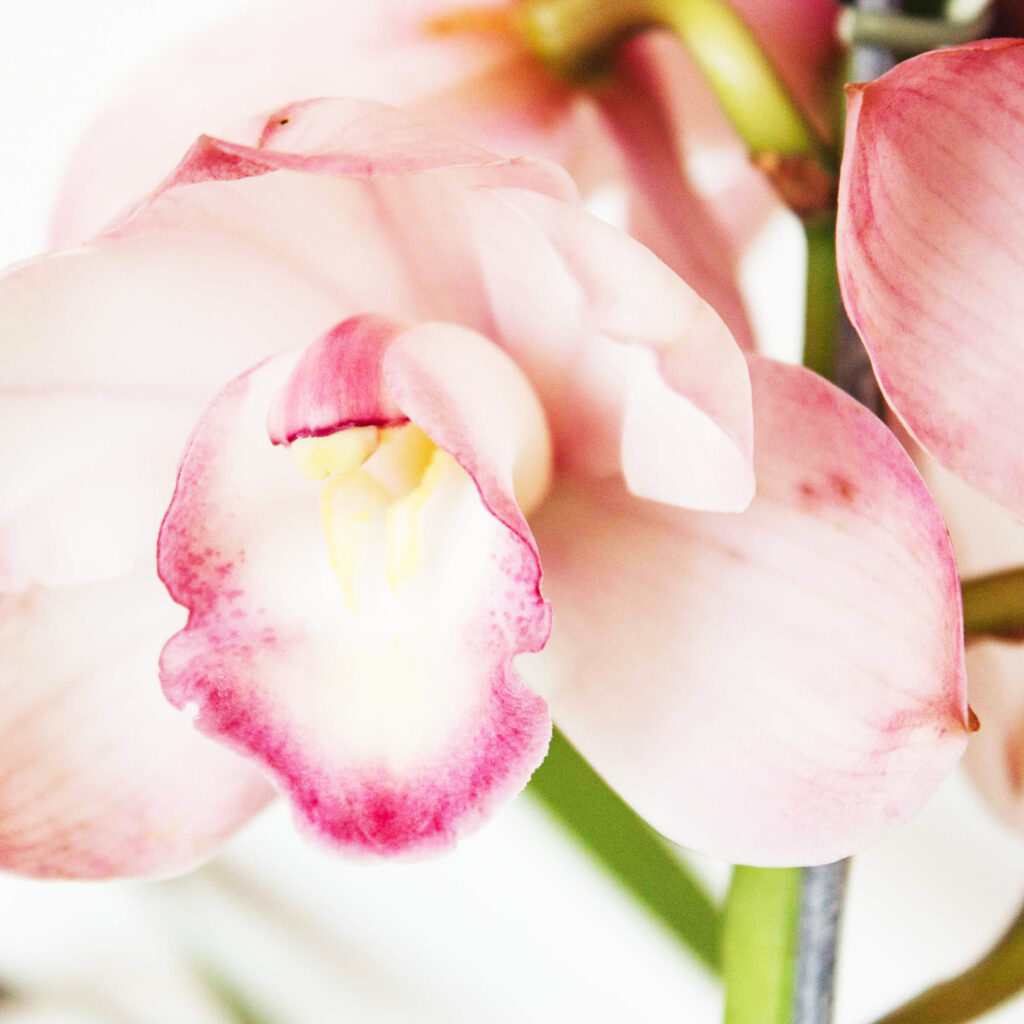
INDOOR PLANTS
Cymbidium
Cymbidium /sɪmˈbɪdiəm/, commonly known as boat orchids, is a genus of evergreen foliage plants in the orchid family Orchidaceae. Orchids in this genus are epiphytic, lithophytic, terrestrial or rarely leafless saprophytic herbs usually with pseudobulbs. There are usually between three and twelve leaves arranged in two ranks on each pseudobulb or shoot and lasting for several years. From one to a large number of flowers are arranged on an unbranched flowering stem arising from the base of the pseudobulb. The sepals and petals are all free from and similar to each other. The labellum is significantly different from the other petals and the sepals and has three lobes. There are about fifty-five species and sixteen further natural hybrids occurring in the wild from tropical and subtropical Asia to Australia. Cymbidiums are well known in horticulture and many cultivars have been developed.
Plant Care
 |
Requires partial light, but avoid bright sunlight. |
 |
Keep the compost moderately moist during growth, allowing it to dry slightly between each watering period. |
 |
Apply slow release fertilizer every 3 months from time you purchase. |
 |
This is for indoor use. |
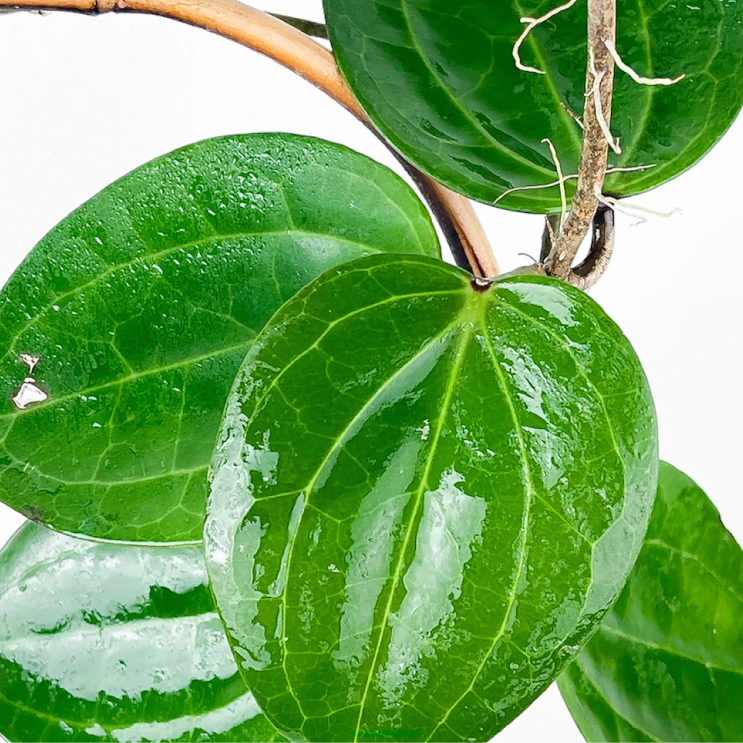
INDOOR PLANTS
Dischidia / Hoya
Dischidia is a genus of plants in the family Apocynaceae. They are epiphytes native to tropical areas of China, India and most areas of Indo-China. Dischidia are closely aligned with the sister genus Hoya. Unlike Hoya, the genus Dischidia is poorly known and has not been studied as closely. A few of the species in widespread cultivation, and can be kept as houseplants in temperate regions.
Hoya is a genus of 200–300 species of tropical plants in the dogbane family, Apocynaceae. Most are native to several countries of Asia such as Philippines, India, Thailand, Malaysia, Vietnam, Bangladesh, Indonesia, Polynesia, New Guinea, and vast variety of species could also be found in Australia.
Plant Care

|
Requires partial light, but avoid bright sunlight. |

|
Keep the compost moderately moist during growth, allowing it to dry slightly between each watering period. |

|
Apply slow release fertilizer every 3 months from time you purchase. |

|
N/A |
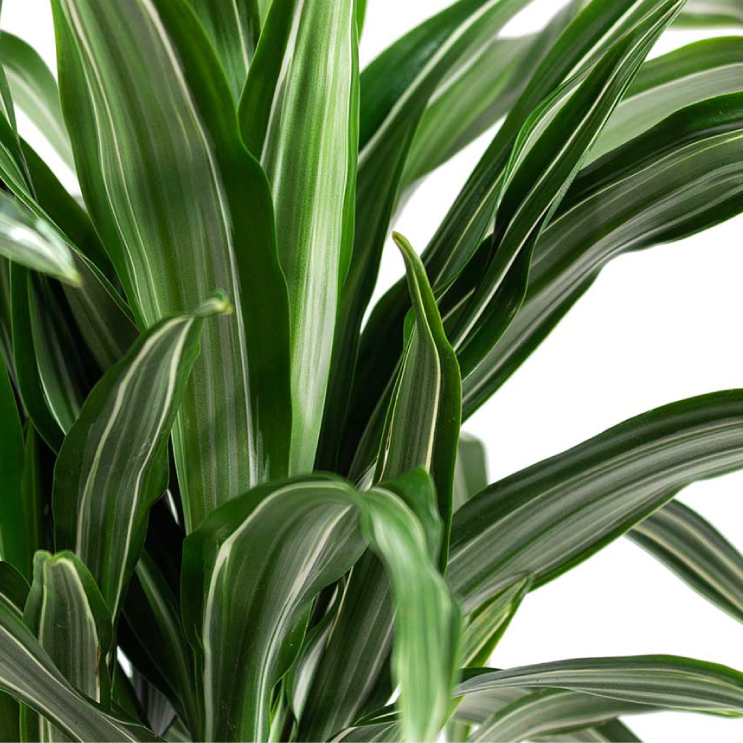
INDOOR PLANTS
Dracaena
Dracaena (/drəˈsiːnə/) is a genus of about 120 species of trees and succulent shrubs. The formerly accepted genera Pleomele and Sansevieria are now included in Dracaena. In the APG IV classification system, it is placed in the family Asparagaceae, subfamily Nolinoideae (formerly the family Ruscaceae). It has also formerly been separated (sometimes with Cordyline) into the family Dracaenaceae or placed in the Agavaceae (now Agavoideae). The majority of the species are native to Africa, southern Asia through to northern Australia, with two species in tropical Central America.
Plant Care
 |
Requires partial light, but avoid bright sunlight. |
 |
Keep the compost moderately moist during growth, allowing it to dry slightly between each watering period. |
 |
Apply slow release fertilizer every 3 months from time you purchase. |
 |
It can be used as garden plants. Except dracaena warneckii which is recommended for indoor use. |
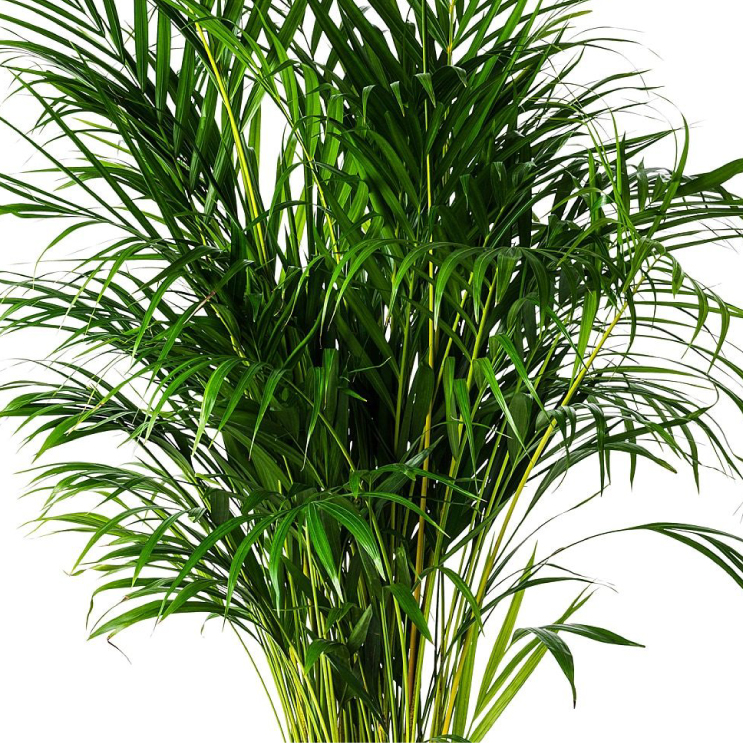
INDOOR PLANTS
Dypsis
Dypsis is a genus of foliage plants in the family Arecaceae. They are slender, evergreen palms with yellow flowers carried in panicles amongst the pinnate leaves. Many Dypsis species have aerial branching (above the main trunk), a rare growth habit among palms.Some have marcescent leaves that remain attached after death and trap litter for nutrients.
The etymology is obscure but may be related to the Greek dypto ‘I dive’ or dyptes ‘diver’. The species are native to Tanzania, Madagascar, and various islands in the Indian Ocean (Mauritius and Comoros). A few are naturalized in other regions, especially in the Caribbean.
Plant Care
 |
Requires partial light, but avoid bright sunlight. |
 |
Keep the compost moderately moist during growth, allowing it to dry slightly between each watering period. |
 |
Apply slow release fertilizer every 3 months from time you purchase. |
 |
Known as palmera. Good for garden plants. |
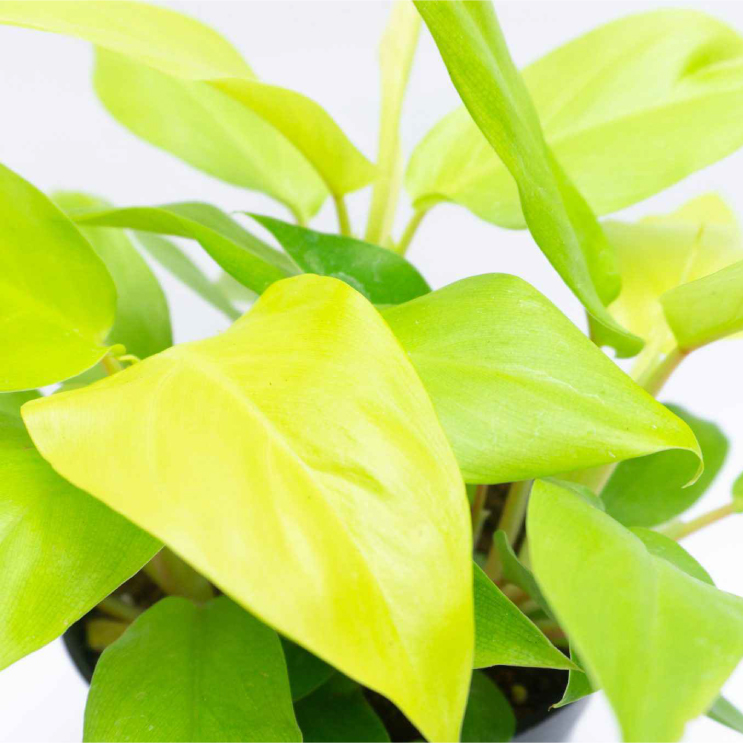
INDOOR PLANTS
Epipremnum Pothos・Scindapsus
Epipremnum aureum is a species in the arum family Araceae, native to Mo'orea in the Society Islands of French Polynesia. The species is a popular houseplant in temperate regions but has also become naturalised in tropical and sub-tropical forests worldwide, including northern South Africa, Australia, Southeast Asia, South Asia, the Pacific Islands and the West Indies, where it has caused severe ecological damage in some cases. The plant has a number of common names including golden pothos, Ceylon creeper, hunter's robe, ivy arum, house plant, money plant, silver vine, Solomon Islands ivy, marble queen, and taro vine. It is also called devil's vine or devil's ivy because it is almost impossible to kill and it stays green even when kept in the dark. It is sometimes mistakenly labeled as a Philodendron or Pothos in plant stores. It is commonly known as a money plant in many parts of the Indian subcontinent. It rarely flowers without artificial hormone supplements; the last known spontaneous flowering was reported in 1964. The plant has gained the Royal Horticultural Society's Award of Garden Merit. Scindapsus belong to same family of Epipremnum. Follow caring tips of Epipremnum.
Plant Care

|
Requires partial light, but avoid bright sunlight. |

|
Keep the compost moderately moist during growth, allowing it to dry slightly between each watering period. |

|
Apply slow release fertilizer every 3 months from time you purchase. |

|
N/A |
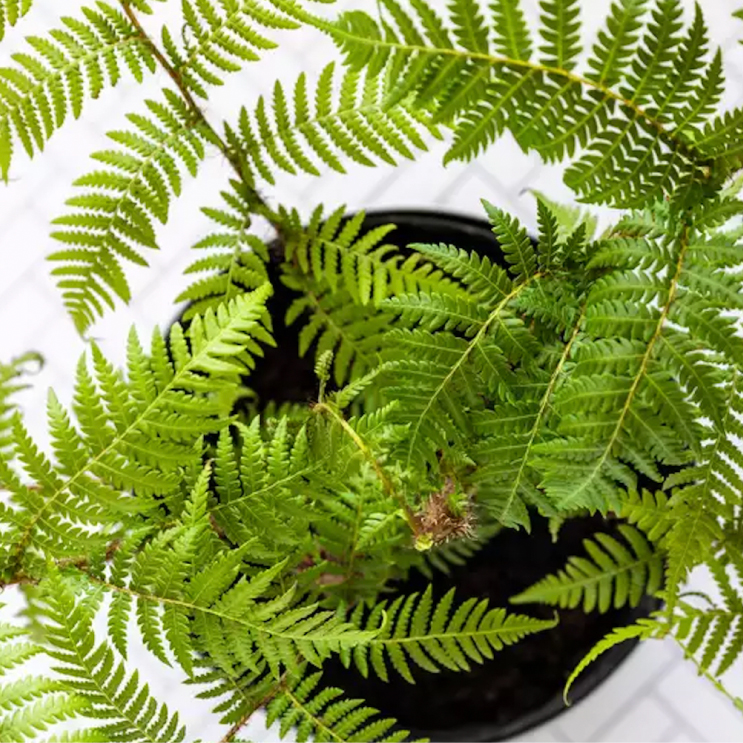
INDOOR PLANTS
Asplenium / Nephrolepis
Asplenium is a genus of about 700 species of ferns, often treated as the only genus in the family Aspleniaceae, though other authors consider Hymenasplenium separate, based on molecular phylogenetic analysis of DNA sequences, a different chromosome count, and structural differences in the rhizomes. The type species for the genus is Asplenium marinum. The most common vernacular name is spleenworts, applied to the more "typical" species. A. nidus and several similar species are called bird's-nest ferns, the Camptosorus group is known as walking ferns, and distinct names are applied to some other particularly well-known species.
Nephrolepis is a genus of about 30 species of ferns. It is the only genus in the family Nephrolepidaceae, placed in the suborder Aspleniineae (eupolypods I) of the order Polypodiales in the Pteridophyte Phylogeny Group classification of 2016 (PPG I). (It is placed in the Dryopteridaceae in some other classifications.) The genus is commonly referred to as macho ferns or swordferns.
Plant Care

|
Requires partial light, but avoid bright sunlight. |

|
Keep the compost moderately moist during growth, allowing it to dry slightly between each watering period. |

|
Apply slow release fertilizer every 3 months from time you purchase. |

|
N/A |
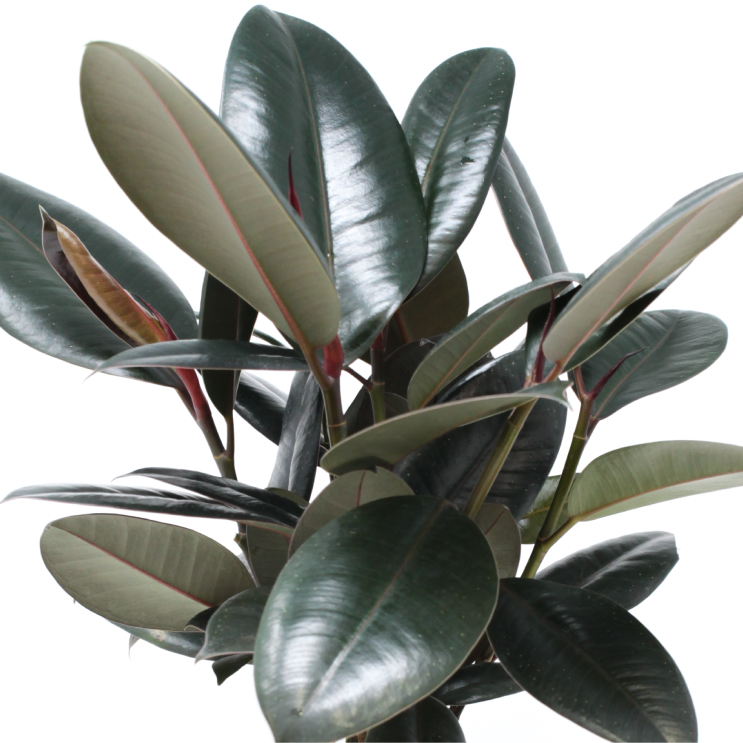
INDOOR PLANTS
Ficus
Ficus (/ˈfaɪkəs/ or /ˈfiːkəs/) is a genus of about 850 species of woody trees, shrubs, vines, epiphytes and hemiepiphytes in the family Moraceae. Collectively known as fig trees or figs, they are native throughout the tropics with a few species extending into the semi-warm temperate zone. The common fig (F. carica) is a temperate species native to southwest Asia and the Mediterranean region (from Afghanistan to Portugal), which has been widely cultivated from ancient times for its fruit, also referred to as figs. The fruit of most other species are also edible though they are usually of only local economic importance or eaten as bushfood. However, they are extremely important food resources for wildlife. Figs are also of considerable cultural importance throughout the tropics, both as objects of worship and for their many practical uses.
Plant Care
 |
Requires partial light, but avoid bright sunlight. |
 |
Keep the compost moderately moist during growth, allowing it to dry slightly between each watering period. |
 |
Apply slow release fertilizer every 3 months from time you purchase. |
 |
Elastica, bengalensis, umbelata are good also for garden plants. |
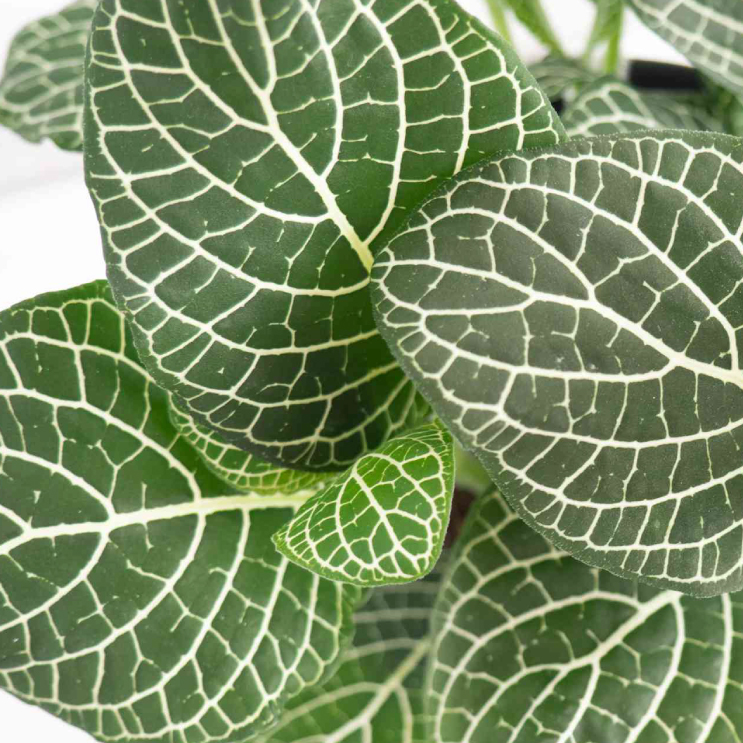
INDOOR PLANTS
Fittonia
Fittonia (nerve plant) is a genus of foliage plants in the acanthus family Acanthaceae, native to tropical rainforest in South America, mainly Peru. The most commonly grown are F. albivenis and its cultivars. They are spreading evergreen perennials growing 10–15 cm (4–6 in) tall. They bear lush green leaves with accented veins of white to deep pink and have a short fuzz covering their stems. Small buds may appear after a time where the stem splits into leaves. Flowers are small with a white to off-white colour. Plants are best kept in a moist area with mild sunlight and temperatures above 55 °F (13 °C), therefore in temperate areas they must be grown as houseplants. Without water for a few days, this plant is known to "faint" but is easily revived with a quick watering. Its spreading habit makes it ideal as groundcover.
Plant Care
 |
Requires partial light, but avoid bright sunlight. |
 |
Keep the compost moderately moist during growth, allowing it to dry slightly between each watering period. |
 |
Apply slow release fertilizer every 3 months from time you purchase. |
 |
N/A |
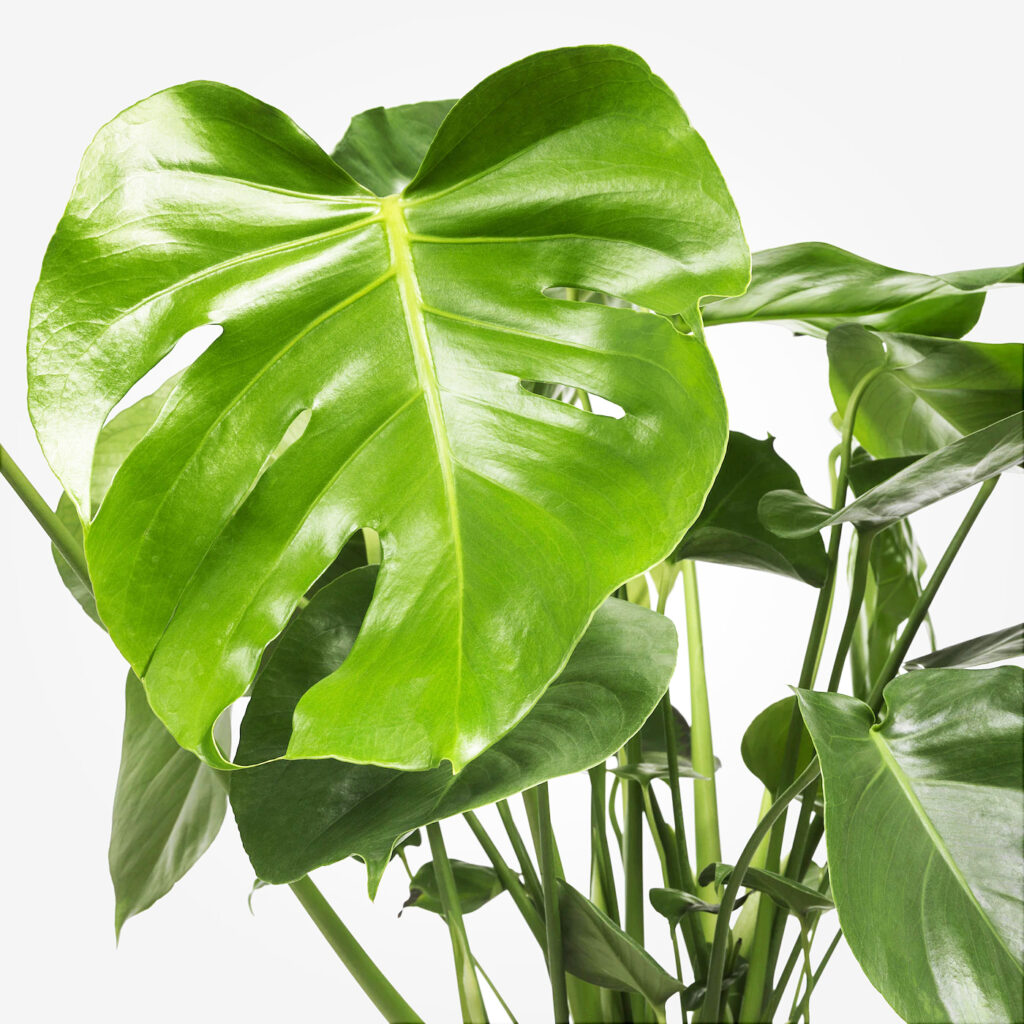
INDOOR PLANTS
Monstera
Monstera is a genus of 45 species of foliage plants in the arum family, Araceae, native to tropical regions of the Americas. The genus is named from the Latin word for "monstrous" or "abnormal", and refers to the unusual leaves with natural holes that members of the genus have. They are herbs or evergreen vines, growing to heights of 20 metres (66 ft) in trees, climbing by means of aerial roots which act as hooks over branches; these roots will also grow into the soil to help support the plant. Since the plant roots both into the soil and over trees, it is considered a hemiepiphyte. The leaves are alternate, leathery, dark green, very large, from 25–90 centimetres (9.8–35.4 in) long (up to 130 centimetres (51 in) long in M. dubia) and 15–75 centimetres (5.9–29.5 in) broad, often with holes in the leaf blade. The fenestrated leaves allow for the leaves to spread over greater area to increase sunlight exposure, by using less energy to produce and maintain the leaves. The flowers are borne on a specialised inflorescence called a spadix, 5–45 centimetres (2.0–17.7 in) long; the fruit is a cluster of white berries, edible in some species.
Plant Care
 |
Requires partial light, but avoid bright sunlight. |
 |
Keep the compost moderately moist during growth, allowing it to dry slightly between each watering period. |
 |
Apply slow release fertilizer every 3 months from time you purchase. |
 |
N/A |
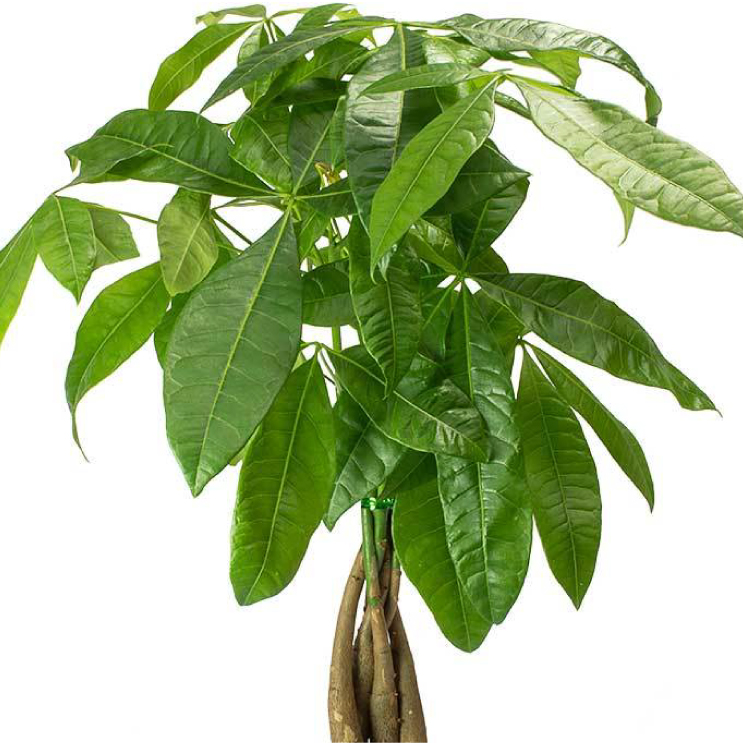
INDOOR PLANTS
Pachira Aquatica
Pachira aquatica is a tropical wetland tree in the mallow family Malvaceae, native to Central and South America where it grows in swamps. It is known by its nonscientific names Malabar chestnut, French peanut, Guiana chestnut, Provision tree, Saba nut, Monguba (Brazil), Pumpo (Guatemala) and is commercially sold under the names Money tree and Money plant. This tree is sometimes sold with a braided trunk and is commonly grown as a houseplant, although more commonly what is sold as a "Pachira aquatica" houseplant is in fact a similar species, P. glabra. The genus name is derived from a language spoken in Guyana. The species name is Latin for "aquatic". It is classified in the subfamily Bombacoideae of the family Malvaceae. Previously it was assigned to Bombacaceae. The name "money tree" is believed to refer to a story of its origin, in which a poor man prayed for money, found this "odd" plant, took it home as an omen, and made money selling plants grown from its seeds.
Plant Care

|
Requires partial light, but avoid bright sunlight. |

|
Keep the compost moderately moist during growth, allowing it to dry slightly between each watering period. |

|
Apply slow release fertilizer every 3 months from time you purchase. |

|
N/A |
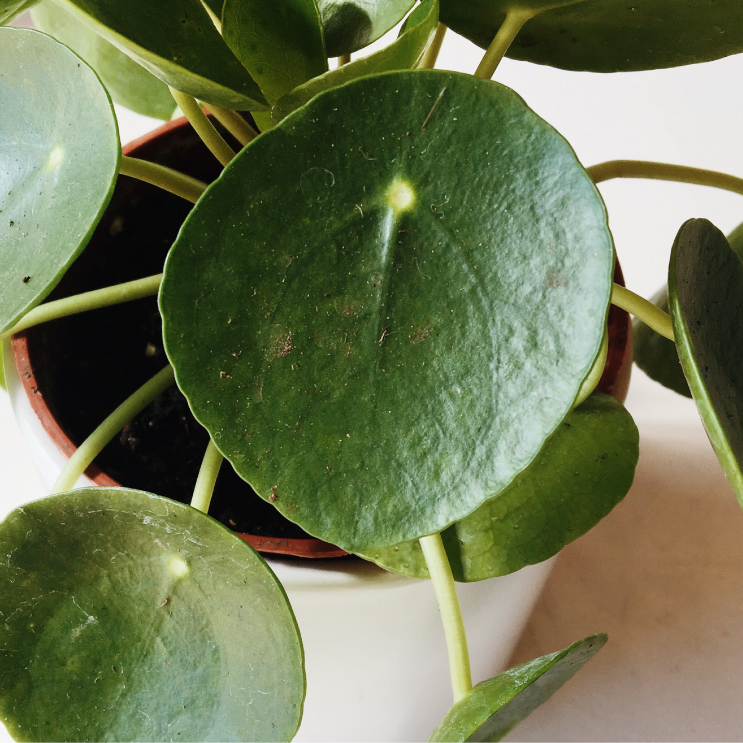
INDOOR PLANTS
Peperomia / Pilea
Peperomia (radiator plant) is one of the two large genera of the family Piperaceae. Most of them are compact, small perennial epiphytes growing on rotten wood. More than 1500 species have been recorded, occurring in all tropical and subtropical regions of the world, though concentrated in Central America and northern South America. A limited number of species (around 17) are found in Africa.
Pilea peperomioides (/paɪˈliːə pɛpəˌroʊmiˈɔɪdiːz/), the Chinese money plant, ufo plant, pancake plant or missionary plant, is a species of flowering plant in the nettle family Urticaceae, native to Yunnan and Sichuan provinces in southern China.
Plant Care

|
Requires partial light, but avoid bright sunlight. |

|
Keep the compost moderately moist during growth, allowing it to dry slightly between each watering period. |

|
Apply slow release fertilizer every 3 months from time you purchase. |

|
N/A |
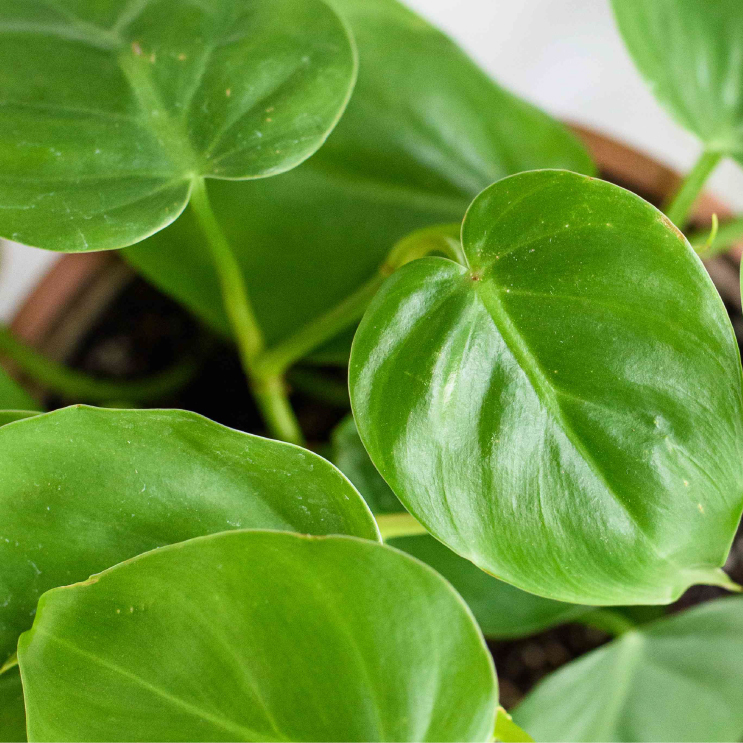
INDOOR PLANTS
Philodendron
Philodendron is a large genus of foliage plants in the family Araceae. As of September 2015, the World Checklist of Selected Plant Families accepted 489 species; other sources accept different numbers. Regardless of number of species, the genus is the second-largest member of the family Araceae, after genus Anthurium. Taxonomically, the genus Philodendron is still poorly known, with many undescribed species. Many are grown as ornamental and indoor plants. The name derives from the Greek words philo- or "love, affection" and dendron or "tree". The generic name, Philodendron, is often used as the English name, "philodendron".
Plant Care
 |
Requires partial light, but avoid bright sunlight. |
 |
Keep the compost moderately moist during growth, allowing it to dry slightly between each watering period. |
 |
Apply slow release fertilizer every 3 months from time you purchase. |
 |
N/A |
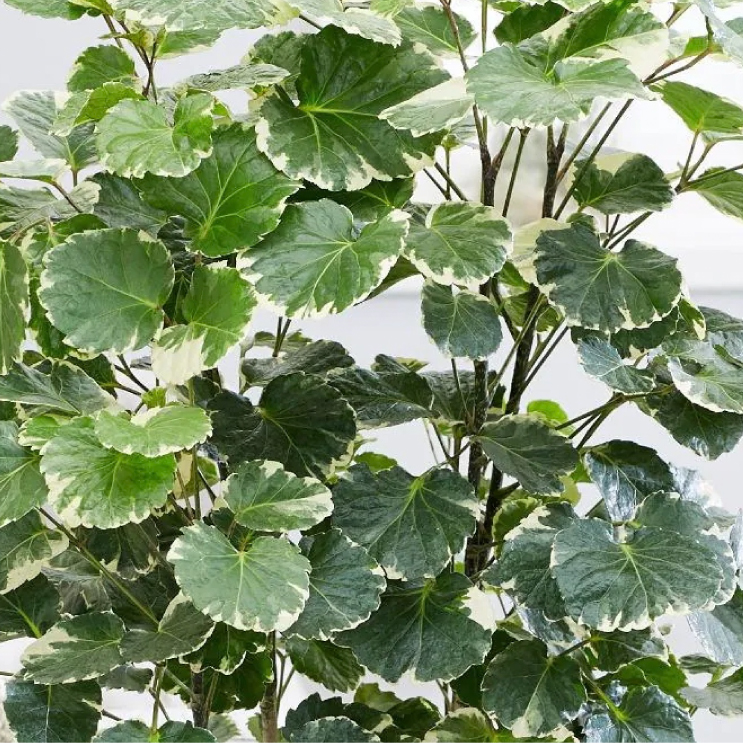
INDOOR PLANTS
Polyscias
Polyscias is a genus of foliage plants in the family Araliaceae. They bear pinnately compound leaves. In 2003, a checklist and nomenclator was published for Araliaceae. In this work, 116 species were listed for Polyscias.
Plant Care
 |
Requires partial light, but avoid bright sunlight. |
 |
Keep the compost moderately moist during growth, allowing it to dry slightly between each watering period. |
 |
Apply slow release fertilizer every 3 months from time you purchase. |
 |
N/A |
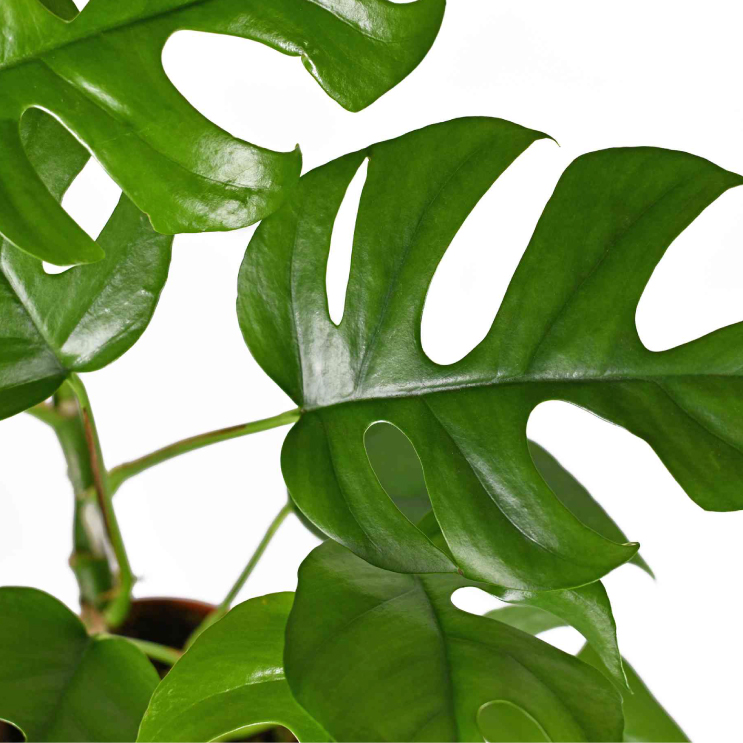
INDOOR PLANTS
Raphidophora
Rhaphidophora is a genus in the family Araceae, occurring from tropical Africa eastwards through Malesia and Australasia to the Western Pacific. The genus consists of approximately 100 species.
Plant Care

|
Requires partial light, but avoid bright sunlight. |

|
Keep the compost moderately moist during growth, allowing it to dry slightly between each watering period. |

|
Apply slow release fertilizer every 3 months from time you purchase. |

|
N/A |
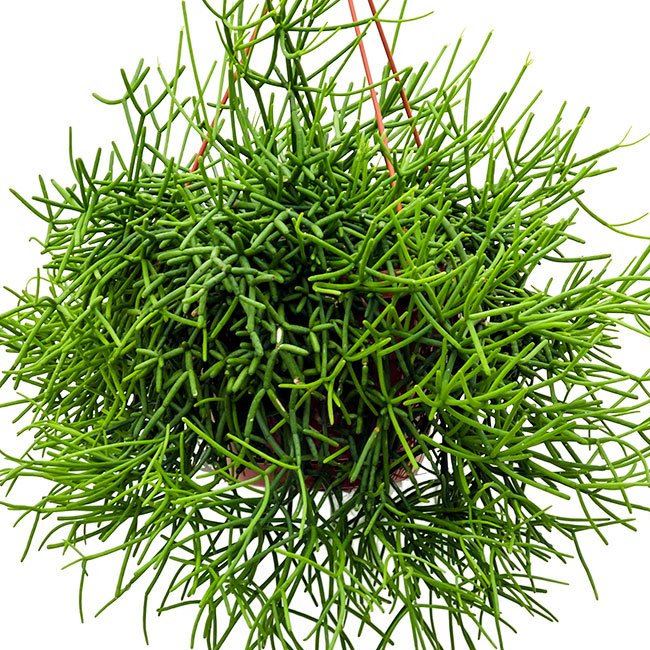
INDOOR PLANTS
Rhipsalis
Rhipsalis is a genus of epiphytic foliage plants in the cactus family, typically known as mistletoe cacti. They are found in parts of Central America, the Caribbean and northern regions of South America. They also inhabit isolated locations in Africa and Asia, and are the only cactus group naturally occurring in the Old World. This is the largest and most widely distributed genus of epiphytic cacti (those which live on other plants without damaging them). The scientific name Rhipsalis derives from the Ancient Greek term for wickerwork, referring to the plants' morphology.
Plant Care
 |
Requires partial light, but avoid bright sunlight. |
 |
Keep the compost moderately moist during growth, allowing it to dry slightly between each watering period. |
 |
Apply slow release fertilizer every 3 months from time you purchase. |
 |
N/A |
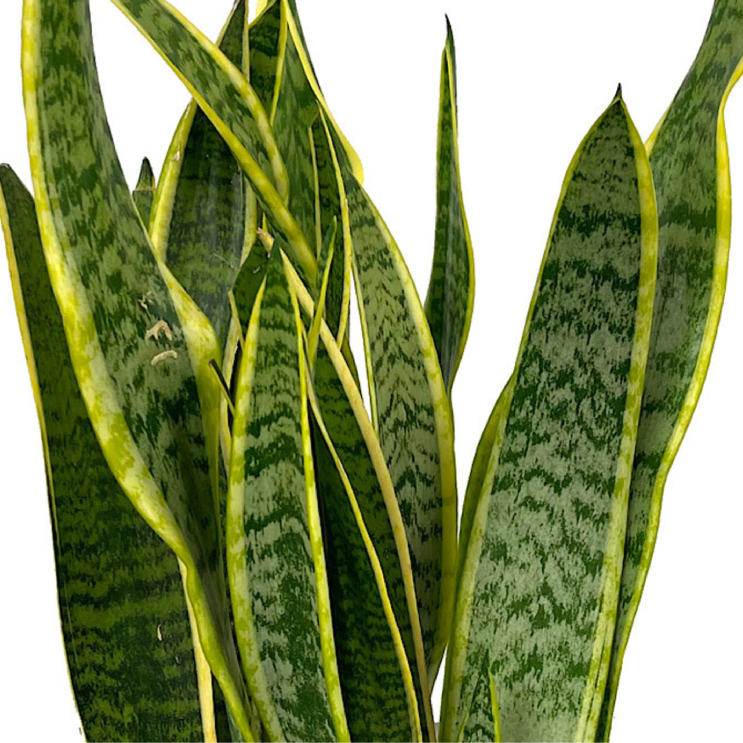
INDOOR PLANTS
Sansevieria
Sansevieria is a historically recognized genus of foliage plants, native to Africa, notably Madagascar, and southern Asia, now included in the genus Dracaena on the basis of molecular phylogenetic studies. Common names for the 70 or so species formerly placed in the genus include mother-in-law's tongue, devil's tongue, jinn's tongue, bow string hemp, snake plant and snake tongue. In the APG III classification system, Dracaena is placed in the family Asparagaceae, subfamily Nolinoideae (formerly the family Ruscaceae). It has also been placed in the former family Dracaenaceae.
Plant Care
 |
Requires partial light, but avoid bright sunlight. |
 |
Keep the compost moderately dry, let the compost dry between watering. |
 |
Apply slow release fertilizer every 3 months from time you purchase. |
 |
N/A |
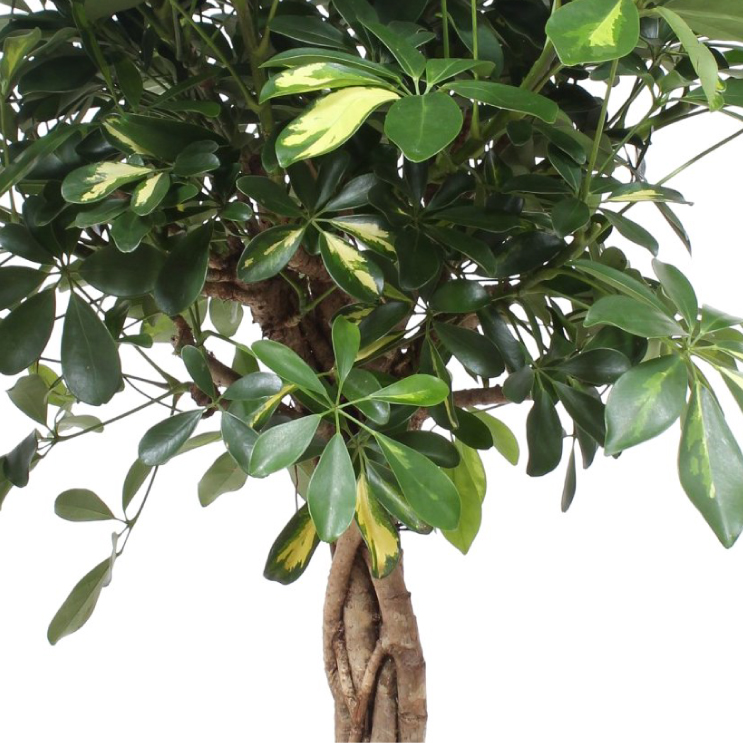
INDOOR PLANTS
Schefflera
Schefflera /ˈʃɛflərə/ is a genus of foliage plants in the family Araliaceae. With an estimated 600–900 species, the genus represents about half of its family. The plants are trees, shrubs or lianas, growing 4–20 metres (13–66 ft) tall, with woody stems, the absence of articulated pedicels and armaments, and palmately compound leaves. Several species are grown in pots as houseplants, most commonly Schefflera actinophylla (umbrella tree) and Schefflera arboricola (dwarf umbrella tree). Numerous cultivars have been selected for various characters, most popularly for variegated or purple foliage. Schefflera species are used as food plants by the larvae of some Lepidopteran species including Batrachedra arenosella (recorded on S. stellata). Schefflera arboricola and Schefflera actinophylla can be used to attract birds. The genus is named in honor of Johann Peter Ernst von Scheffler (born in 1739), physician and botanist of Gdańsk, and later of Warsaw, who contributed plants to Gottfried Reyger for Reygers book, 'Tentamen Florae Gedanensis'.
Plant Care
 |
Requires partial light, but avoid bright sunlight. |
 |
Keep the compost moderately moist during growth, allowing it to dry slightly between each watering period. |
 |
Apply slow release fertilizer every 3 months from time you purchase. |
 |
N/A |
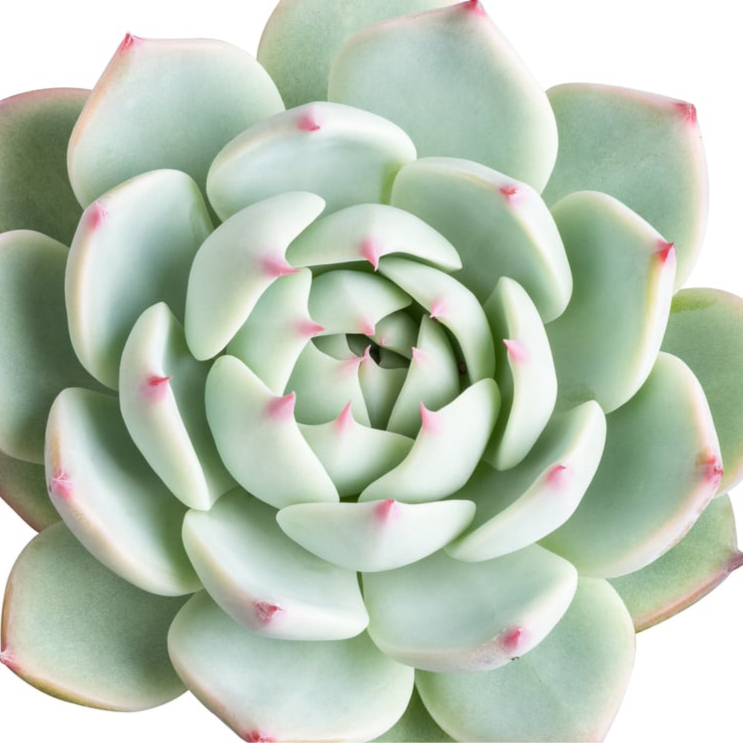
INDOOR PLANTS
Succulent Echeveria
Echeveria is a large genus of foliage plants in the family Crassulaceae, native to semi-desert areas of Central America, Mexico and northwestern South America.
Plant Care
 |
Requires partial light, but avoid bright sunlight. |
 |
Keep the compost moderately dry, let the compost dry between watering. |
 |
Apply slow release fertilizer every 3 months from time you purchase. |
 |
Too dark place make it stretched shape. |
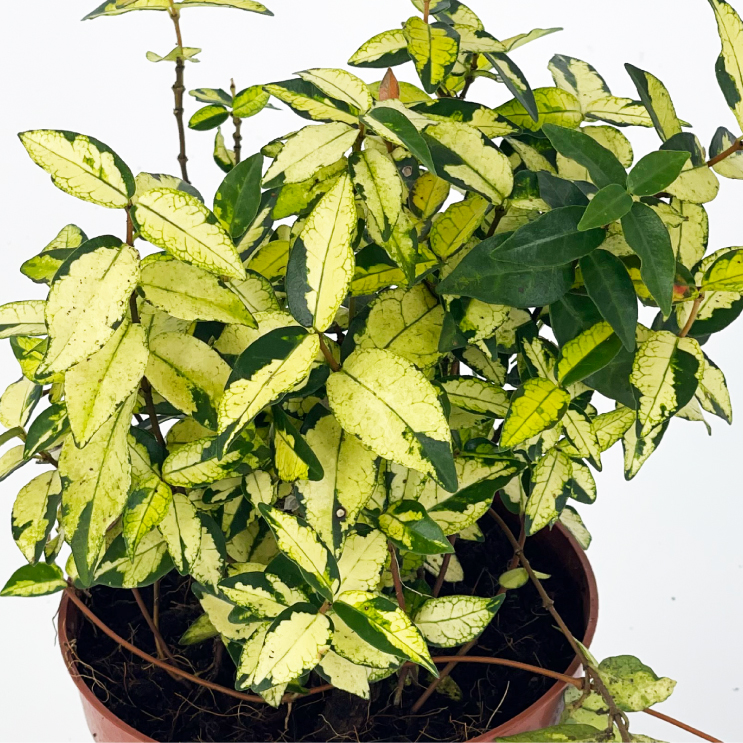
INDOOR PLANTS
Tracherospermum
Trachelospermum / trəˌkiːloʊˈspɜːrməm / Star Jasmine, Confederate Jasmine, is a genus of evergreen woody vines in the dogbane family Apocynaceae, first described as a genus in 1851. All species are native to southern and eastern Asia. They have long stems climbing to 12 m or more high in trees. The leaves are opposite, simple broad lanceolate to ovate, 2–8 cm long and 0.5–4 cm broad. The flowers are salverform (like those of Phlox), simple, 2.5–7 cm broad, with five white, pale yellow or purple petals joined together at the base to form a tube. The generic name Trachelospermum comes from the Greek, literally meaning "neck seed", and referring to the seed shape.
Plant Care
 |
Requires partial light, but avoid bright sunlight. |
 |
Keep the compost moderately moist during growth, allowing it to dry slightly between each watering period. |
 |
Apply slow release fertilizer every 3 months from time you purchase. |
 |
This is also good ground cover plants in garden, direct sunlight make color vivid. |
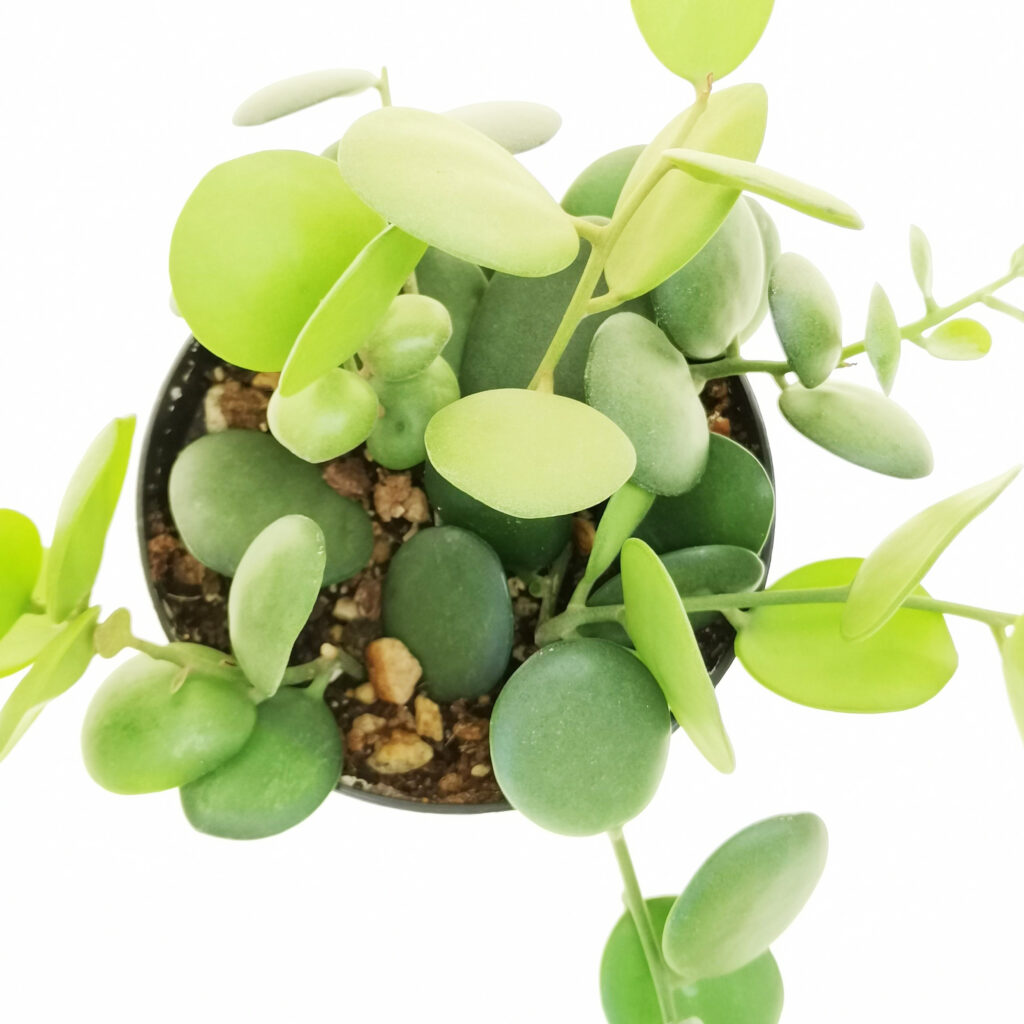
INDOOR PLANTS
Xerosicyos
Xerosicyos is a foliage plants genus of the family Cucurbitaceae. Its name comes from Greek xeros (meaning "dry") and sicyos ("cucumber"). There are three species, all endemic to Madagascar. Xerosicyos danguyi is a large liana with thick stems and round, gray succulent leaves. It is common in cultivation and often called the "silver dollar" vine. Xerosicyos perrieri is also a liana with thinner stems and smaller, ovate green succulent leaves. Xerosicyos pubescens is entirely different from the previous species. It forms a large caudex from which deciduous vines emerge. The leaves are lobed and semi-succulent and die back in the dry season and during prolonged periods of drought.
Plant Care
 |
Requires partial light, but avoid bright sunlight. |
 |
Keep the compost moderately moist during growth, allowing it to dry slightly between each watering period. |
 |
Apply slow release fertilizer every 3 months from time you purchase. |
 |
N/A |
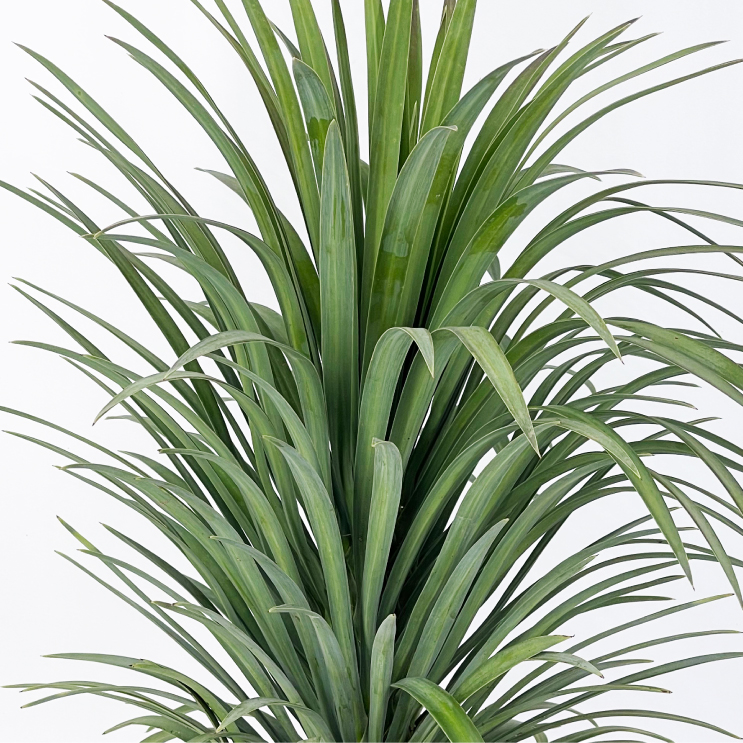
INDOOR PLANTS
Yucca
Yucca is a genus of perennial shrubs and trees in the family Asparagaceae, subfamily Agavoideae. Its 40–50 species are notable for their rosettes of evergreen, tough, sword-shaped leaves and large terminal panicles of white or whitish flowers. They are native to the hot and dry (arid) parts of the Americas and the Caribbean. Early reports of the species were confused with the cassava (Manihot esculenta). Consequently, Linnaeus mistakenly derived the generic name from the Taíno word for the latter, yuca. The Aztecs living in Mexico since before Spanish arrival, in Nahuatl, call the local yucca species (Yucca gigantea) iczotl, which gave the Spanish izote. Izote is also used for Yucca filifera.
Plant Care

|
Requires partial light, but avoid bright sunlight. |

|
Keep the compost moderately moist during growth, allowing it to dry slightly between each watering period. |

|
Apply slow release fertilizer every 3 months from time you purchase. |

|
N/A |
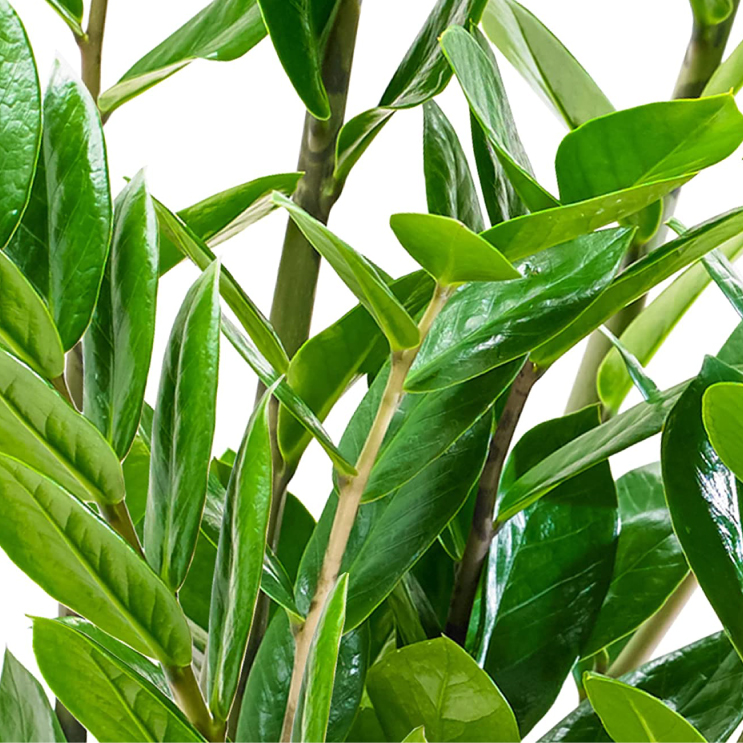
INDOOR PLANTS
Zamioclucas
Zamioculcas is a genus of foliage plants in the family Araceae, containing the single species Zamioculcas zamiifolia. It is a tropical perennial plant native to eastern Africa, from southern Kenya to northeastern South Africa. Common names include Zanzibar gem, ZZ plant, Zuzu plant, aroid palm, eternity plant and emerald palm. It is grown as an ornamental plant, mainly for its attractive glossy foliage and easy care. Dutch nurseries started wide-scale commercial propagation of the plant around 1996. It was first described as Caladium zamiifolium by Loddiges in 1829, moved to his new genus Zamioculcas by Heinrich Wilhelm Schott and given its established name Zamioculcas zamiifolia by Adolf Engler. The roots of the plant are rhizomes, which is the reason behind the plant being drought tolerant as the rhizomes store water in it that the plant can use later. Thus the plant should be watered only when it is dry to avoid overwatering. They require good drainage system and can live on moderate to indirect sunlight. Insufficient sunlight can be indicated by leaf lengthening.
Plant Care
 |
Requires partial light, but avoid bright sunlight. |
 |
Keep the compost moderately dry, let the compost dry between watering. |
 |
Apply slow release fertilizer every 3 months from time you purchase. |
 |
N/A |
